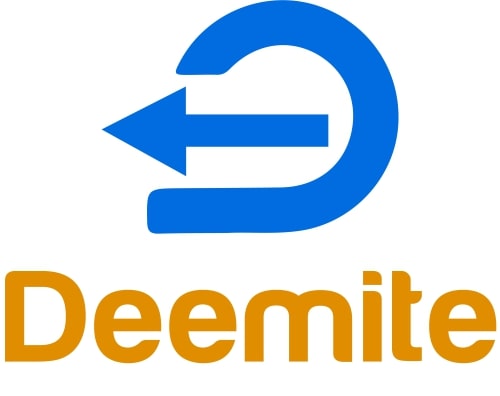In the vast expanse of the internet, information flows freely and abundantly. We turn to websites for news, knowledge, and entertainment.
But have you ever wondered who is behind the content you consume?
Knowing the publisher of a website is vital in today’s digital age, where misinformation and disinformation spread like wildfire.
Trustworthy sources and transparent publishers play a crucial role in shaping our understanding of the world.
In this blog, we will delve into the significance of knowing website publishers and learn how to uncover the invisible entities behind websites.
Why Knowing the Publisher Matters?
At first glance, a website might appear reputable, but without knowing its publisher, we lack vital context. Understanding who stands behind the content is essential for building trust and credibility.
Knowing the website’s purpose and agenda empowers us to critically evaluate the information presented. Transparent publishers foster a sense of reliability, guiding us toward reliable sources for our research and knowledge.
6 Ways to Find the Publisher of a Website
Let’s embark on a journey to uncover website publishers:
1. Check the Website Footer
The website footer is the section located at the bottom of a webpage. It typically contains information like copyright notices, contact details, links to important pages, and sometimes the name of the website’s publisher or the company responsible for the site.
To find the publisher, simply scroll down to the bottom of the webpage and look for any relevant information.
2. Explore the “About Us” or “Contact” Page
The “About Us” or “Contact” pages on a website often provide more detailed insights into the origins of the website and the individuals or organizations behind its creation and content.
These pages may contain information about the company’s history, mission, team members, and contact details, which can help you identify the publisher.
3. Use Search Engines
Search engines like Google can be powerful tools to discover information about website publishers. You can conduct searches using relevant keywords related to the website or its content, which may lead to articles, interviews, or press releases mentioning the publisher.
Additionally, some websites may have been covered by news outlets or featured in industry-specific publications, which could reveal the publisher’s identity.
4. Utilizing WHOIS Lookup
WHOIS is a protocol used to query databases and obtain registration information about domain names. Many domain registrars provide a WHOIS lookup service that allows you to find the names of website owners or organizations associated with a particular domain name.
By performing a WHOIS lookup, you can access information such as the domain registrant’s name, contact details, and registration date, which may help you identify the website’s publisher.
5. Social Media and LinkedIn
Social media platforms, especially LinkedIn, can provide additional information about website publishers. By searching for the website’s name or relevant keywords on LinkedIn, you may find profiles of individuals associated with the website.
These profiles could belong to the website’s founders, owners, or team members, giving you insights into the publisher’s identity and their professional background.
6. Exploring Legal Disclaimers and Privacy Policies
Legal disclaimers and privacy policies are typically found on websites to inform visitors about their rights and how their personal information is handled.
These pages may contain information about the website’s owner or operator, including the publisher’s name or the organization responsible for the site. Be sure to review these sections thoroughly to find any valuable clues about the publisher.
What are the Challenges in Finding Website Publishers?
Finding website publishers can be challenging due to various factors. Here are some of the key challenges:
1. Anonymity and Privacy Measures
Some website owners or publishers might choose to keep their identities private for various reasons, such as avoiding spam or unwanted contact.
They may use privacy services or domain registration proxies to shield their personal information from WHOIS lookup, making it difficult to identify them through traditional means.
2. Domain Privacy Services
Many domain registrars offer domain privacy services that allow website owners to replace their personal information with generic or private contact details in the WHOIS database. This practice further hinders the direct identification of the website’s publisher.
3. Multiple Layers of Ownership
Some websites might be owned or operated by companies or individuals who use intermediary organizations to register the domain on their behalf.
This can create layers of ownership, making it challenging to trace the actual publisher of the website.
4. Outdated Information
The information available on the website footer, “About Us” or “Contact” pages, and even in WHOIS databases may become outdated over time.
Publishers might change, companies could be acquired or rebranded, and contact details may not be regularly updated.
5. Foreign Websites and Language Barriers
Websites published in foreign languages or hosted in different countries can pose challenges in identifying the publishers. Language barriers and differences in domain registration practices can complicate the process.
6. Abandoned or Inactive Websites
Some websites might no longer be actively maintained or updated, and the publisher’s information may not be readily available or easily traceable.
7. Privacy and Legal Constraints
Depending on the jurisdiction and privacy laws, accessing certain information about website publishers may be restricted. Respecting legal boundaries while trying to identify website publishers is crucial.
8. Limited Information in Legal Disclaimers and Privacy Policies
While legal disclaimers and privacy policies may contain valuable information, they might not always explicitly mention the website’s publisher. Instead, they could refer to a company name or legal entity without providing individual names.
9. Fictitious or Misleading Information
In some cases, individuals or organizations intentionally provide false or misleading information about their identity in the website’s registration details or legal documentation, further complicating the process of finding the true publisher.
Despite these challenges, thorough investigation using multiple approaches, including WHOIS lookup, search engine queries, examination of legal documents, and social media research, can still yield valuable information about website publishers.
However, it’s essential to respect privacy concerns and abide by applicable laws and regulations during the process.
Conclusion
In an era where information shapes opinions and actions, knowing the publishers behind websites is paramount. Transparent publishers build trust and credibility, fostering an informed and enlightened society. By following our step-by-step guide given in this article you can easily find a website publisher.






